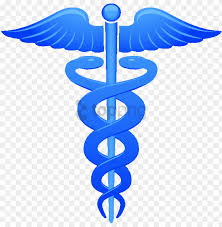SCI-MEDICAL: Features- Breast cancer: Men can fall victim too
.
.
FROM ASEANEWS.NET:

.

Women are affected by breast cancer the most, but while rare, it can affect men too.
According to a study, less than one per cent of breast cancer will occur in men, who have a higher mortality rate than women, due to lack of awareness.
Cancer survivor Yura Iskandar bin Pehin Haji Mohammad Yusof recently spoke to the Bulletin about finding an initially painless lump in early 2019, which then started to grow, resulting in cracks on his breast skin.
.

Over time, the lump became very painful.
“In those early days, I tried to keep my spirits up, despite the changes to my body,” he recalled.
“I refused to accept the truth, yet at the same time, I felt insecure about approaching doctors. Eventually, I decided not to seek medical advice or do anything about it. I just kept it to myself, hoping that it would go away on its own.
“Apart from that, I didn’t know that men could also develop breast cancer. I assumed that it only affected women.
“I couldn’t confide in my family. My mother was in poor health and my children were too young to understand. My wife had just passed away from kidney complications.

“I told a friend, who advised me to get a health examination at the Jerudong Park Medical Centre (JPMC).
“I became emotional when the diagnosis was confirmed, but I kept telling myself that I would be okay, and my daily routine continued as usual.
“I wanted to go on as if nothing happened, but deep down inside, I was devastated.”
.

In the early stages of radiotherapy treatment, Yura Iskandar did not experience any radical changes, but as the treatment continued, he began to feel “warm, uneasy and restless”.
“Following the first operation to remove the lumps in my breast, the sample was sent to Singapore for further analysis,” he said. “But the results found yet more cancer residue, and I underwent a second operation. “
He also underwent at least 15 radiotherapy treatments at The Brunei Cancer Centre (TBCC) of the Pantai Jerudong Specialist Centre (PJSC), in February this year.
“The strong support of family members and the treatment I received brought a new perspective to my life. I also attended several counselling sessions for cancer patients and cancer survivors,” he said.
Yura Iskandar’s advice to men is, “Never ignore any changes which resemble cancer symptoms. Do not hesitate to seek expert treatment or advice, as early detection and prevention could save your life.

“Put your ego on hold, for the sake of your health and family. Seek treatment before it’s too late.”
For men, the main risk factors are genetics, smoking, heavy drinking, liver disease and obesity.
Meanwhile, according to the National Breast Cancer Foundation all people, whether male or female, are born with some breast cells and tissue. Even though males do not develop milk-producing breasts, a man’s breast cells and tissue can still develop cancer. Even so, male breast cancer is very rare. Less than one per cent of all breast cancer cases develop in men, and only one in a 1,000 men will ever be diagnosed with breast cancer.
Breast cancer in men is usually detected as a hard lump underneath the nipple and areola.
.

Men carry a higher mortality than women do, primarily because awareness among men is less and they are less likely to assume a lump is breast cancer, which can cause a delay in seeking treatment. The majority of men diagnosed are over the age of 50.
Of the men who develop breast cancer, the vast majority of those cases are Infiltrating Ductal Carcinoma (IDC), which means cells in or around the ducts begin to invade surrounding tissue. Very rarely, a man might be diagnosed with inflammatory breast cancer or Paget disease of the nipple, which is Ductal Carcinoma In Situ (DCIS) contained within the nipple and usually areola.
Male breast cancer can exhibit the same symptoms as breast cancer in women, including a lump. Anyone who notices anything unusual about their breasts, whether male or female, should contact their physician immediately.
Most men find their own lump while in the shower and it is usually located underneath the nipple and areola. It is common for men to delay reporting the lump to a physician which can result in the patient requiring more treatment.
Nearly all breast cancer in men is estrogen receptor positive with treatment including hormonal therapy, just as it does for 70 per cent of women. Survival rates and treatment for men with breast cancer are very similar to those for women. Early detection of breast cancer increases treatment options and often reduces the risk of dying from breast cancer.

Although treatment outcomes are very similar to women at the same stage of detection, a man diagnosed with breast cancer should also consider seeing a genetics counsellor for a consultation. If a man tests positive for a defective gene (most commonly either BRCA1 or BRCA2) that can lead to a future diagnosis of breast cancer and his children have a 50 per cent chance of carrying the gene.












